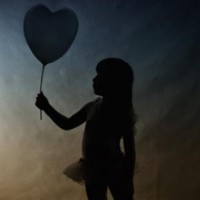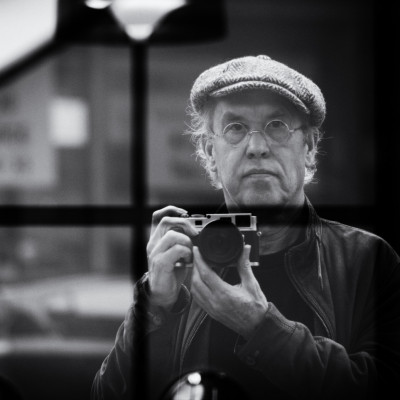SEARCH






|
|
|
|


The photographer of the week is the highly appreciated Derek Galon, whose incredible portraits are as meticulous planned as perfectly executed. Thanks to Yvette Depaepe for conducting the interview. You will find more photos in the end of the article.
Briefly tell us about yourself, your hobbies and other jobs.
I was born 57 years ago in Poland, in a family of a concert pianist and a writer/translator. I had two passions which totally occupied my youngest years – classical music and photography. When I was six, my biggest wish was to get an LP with all 24 Caprices by Nicolo Paganini for violin solo, I just couldn’t have enough of classical music listening to it for days. I started learning violin when I was seven. My dad, between performances and teaching music, spent a bit of time in his darkroom. The word darkroom sounds very nice, but it really was our converted coal-heated bathroom with all hand-made equipment in it. The equipment had lots of faults and was less than basic, but to me it was as it should be, and I loved watching the magic of developing photos.
I received my first camera (Russian-made Smena) when I was ten. When I was fourteen I was the youngest member of our city camera club. The club had several better cameras for members to use, including one real Yashica Mat. I used it sometimes along with Russian-made Zenith, and my first ever paid work was a photo gig. As a young lad aged fifteen I made my mark by photographing regularly all classical musicians coming to my city (Bydgoszcz) for performances in philharmonic hall. Since I knew so much of their repertoire, it was super easy for me to know when they will make an attractive gesture, pose, and predict what moment would be best to capture. These photos got me some early local awards and also my first solo exhibition in the philharmonic hall. Quality of my photos was rather lacking as all images were developed in our bathroom using terribly basic gear, but it was early seventies, people were not as picky as today. I was of course still learning violin at that time, and starting to perform. I also studied other arts. I was always so busy with these things I did not think much of anything else.
So, tell me please – was the music my profession, and photography – a hobby? Or the opposite? Or perhaps both were starting to be my equal professions? I am not sure, but it was all certainly more than a hobby. In fact I don’t think I do have a hobby. I do lots of fascinating things as my work. I have no time, energy, or desire to do anything else. After studies I performed with my jazz group and kept photographing. Did I have other jobs?
Yes, I did plenty of odd jobs at one moment of my life, but they were always temporary. When we with my wife arrived in Canada during hardships of Polish Solidarity times, I had to be a pizza cook, delivery driver, cleaner, hospital helper, and so on. It was just needed to survive, never a “career” of my choice. Because of these low paid jobs, however, I had no time to practice my violin for a while – and I lost my skills. I don’t play any more. Things change in life, I accepted that and in turn it gave me more time for photography. Now I work mostly with photography and publishing.
How has your history and life experiences affected your photography?
As already mentioned, life shaped my photography interests very early, when I started to photograph these musicians. Like most of us, I experienced lots of unexpected turns of life, I travelled, moved, did these odd jobs. It all contributed to shape my photography, and me – as a person. I’ve seen real human misery, I’ve seen the world of super-rich, I experienced love and hatred, ups and downs, I was humbled by life many times. It shaped me immensely, affecting my seeing and understanding of the world.
I cannot, however, answer the second part of your question. My parents made me see the Art with the capital A. For me the Art is something very special and perhaps out of my creative reach. I may have an artistic profession, do artsy images and crave some recognition for my works – but it is not up to me to say that I do Art. Only others, those who know lots of real art, can decide if my work can be qualified as an art or not. I see I do progress with my works and I hope that one day my work will deserve such title. But it is not up to me to say.
What first attracted you to photography?
My father, who created his darkroom out of nothing and loved landscape and portrait photography – he did it! He loved portrait photography. I remember when he bought “real studio lights”. Two of them. They looked like metal buckets, had 500W light bulb which lasted about 1.5 hours only and were terribly expensive. He mounted them on wooden tripods, and using home-made gobos he actually did decent portrait works. The whole ritual of setup, taking photos and then developing them was fascinating. I had to do it too!
Describe your overall photographic vision.
I am not sure I do have one. Commercially I am mostly an architecture, interior and landscape photographer. I work for fine real-estate agents, some resorts in the Caribbean, and together with my wife (an art historian, researcher and writer) we did two thick, award-winning coffee table books on Caribbean subjects.
I also shoot other things my clients may require, and when travelling I do some documentary, nature, and street photography. Most of my photos one can see here on 1X are created in studio over last few years. I guess I started doing them to unwind, to relax after that hard work shooting for two big books and then designing and editing them. At first these studio photos were less complicated experiments, then the studio sucked me into creating more elaborated images. I created several series, of which the “Painterly” – a series influenced by old paintings - is the most successful one. It gained me Fellowship at Royal Photographic Society (UK), and won me dozens of top international medals. But other images also did quite well. It really is labour of love. What I try to say is – I don’t think I have vision. I can do quite versatile work in many styles. I believe in trying hard to keep the highest quality and to pay attention to details in my images. But it is not a vision, I think. I just do what I love to do, and express myself the best way I can.
Why are you so drawn by portrait photography?
I think I am most drawn to the moment of creating an image – any image – capturing a scene, improving and editing it. I do other works, but as they are often commercial, I don’t have free hand to use all of them as I please. As for portraits, it started as a way to unwind after a serious overdose of architecture and landscape works. But there is actually some co-incidence in it. A few years ago I’ve met a fantastic art portrait photographer, a seasoned veteran of studio work, Jon Hoadley. It is through his kindness I have access to his large studio and equipment. He also shares with me his vast knowledge of fine lighting techniques. Without him, my “Painterly” series would not exist. Some of “Painterly” images actually have both of us as models.
Now portraits are one of my main subjects, yes. Once you start doing something and you put lots of thought into it, new ideas come to you easier than at the beginning, therefore my portrait work continues for now as a natural consequence of previously created images…
What is more important to you, the story behind an image or the technical perfection?
The same question is often asked in relation to music. There are many musicians playing with technical brilliance, but after an initial thrill they often start to be boring. Technique is only the means to tell us the story. Without a rich story, the technique is just an empty shell. However, we can’t ignore technique. Last year, when sitting in jury of the famous Al Thani Photo Awards in Austria, I saw many drastic examples of both elements being equally important. We went through thousands of high-calibre photographs, and very many of them had a great story. However, to win – they needed more than that. They needed brilliance in every aspect, including technique. I remember well a very moving photo of a dog sitting patiently next to someone’s hospital bed. The emotional load was amazing. It was clear that the dog will stay with sick owner until the last minute, the devotion and love was stunning. However, having so many other strong images on hand, we had to reject it due to basic technicalities, such as terribly blown whites, cropping, etc. It clearly proved to me that both the story and technique matter. But the story needs to be seen before we discuss technical aspects of an image.
What generally is your relationship to your subject matter beyond being an observer?
That really depends on the subject. If it is landscape, I can only observe, wait for a better light, and adjust to what I see. In studio, I often give a precise guidance to models, setting expressions, poses, etc. Or sometimes, if models are experienced, I let them express and improvise within given guidelines.
What is your most important advice to a beginner in portrait photography and how do you get started?
My advice? Look before you shoot. Very often we are so excited about the main subject that we don’t notice anything else. Does the light come on your subject the way you want? Is the background OK? Are there any necessary things you should remove from the scene, before you click? Is the crop good? Try to really see all details before you click. Compose your scene well. It is much easier to work on a well set photo than on a photo with unnecessary objects, too deep shadows, or other shortcomings. Good portrait lighting can be a challenge. So, study the light on photos you enjoy, and try to understand the light setup used on them. Jon, my friend and an extraordinary portrait photographer often practices lighting ideas on a mannequin. He does that despite some forty years of experience in studio portraits. Think about lighting of your model in advance, and don’t be afraid to stop session and change things if you see it doesn’t work.
How to start your work? Perhaps assist a more experienced photographer to see his ways around it. Or perhaps shoot with an experienced model who will know how to pose and will take some of the deciding burden off your shoulders. I often think of all details well ahead of my session, sometimes making a detailed sketch, lighting diagram, list of props needed. By setting an image in your head, you make it easier to pull it through, I think. And the last thing – don’t be discouraged if a session didn’t work. There are so many things to go wrong, it is only normal that sometimes there is nothing to show from a potentially good session.
Who are your favorite photographers and more importantly, how has your appreciation of their work affected how you approach your own photography?
Some may find it funny, but I don’t have favourite photographers. I don’t browse internet or check libraries for inspiration. There are many great photographers and it is good to see their work sometimes, but that’s it. When I played jazz I found that listening to other jazz violinists did not really help me, I could got scared at lack of my own skills by comparison, or I would start thinking how I should sound like them – instead of focusing on my own style. Same with photography – I rather discover things on my own. Surely, I look at others’ photos. I enjoy checking up works of several fine photographers on 1X. But I don’t knowingly take from their works and I don’t try to compare. If it happens unknowingly (quite possibly so) – then I can’t answer your question, since I don’t know about it. If I take inspiration, it probably is more so from fine old paintings.
Is there is any specific photo taken by another photographer that has inspired you a big deal and why?
I can’t think of such a single inspirational photo. I admire poetry of photos you do, Yvette. I also enjoy the works of Piet flour, Ben Goossens, Michael Bilotta, Christoph Kiciak, Doug Gilbert, Jon Hoadley, Svetlana Melik Nubarova, Cole Thomson, Svetlana L and Ario Wibisono. You see, the list is already quite long and I just started. Each of these photographers has a different style and gives me a different kind of emotion and joy. But no, I don’t have a single favourite photo, or a single favourite iconic, legendary artist.
Are there any specific directions that you would like to take your photography in the future or any specific goals that you wish to achieve?
A few years ago I had no idea I will create my “Painterly”, “Darkly”, or “Home Hybrids” series. Life takes me to places, twists things, constantly changes my life script, and affects the way and subjects I do photograph. I just wish to stay active, open, and learn as I go. Just now - as I write – I am on another sharp turn of my life. Tomorrow I am moving from Victoria, British Columbia, Canada, to Dominica - a small island in the Caribbean. It will be a totally new life, new challenges and new experience. So, all I hope for is to stay active and keep self-improving my photo and editing skills. Since last year I am also flying drones with still and video cameras. So, I hope to keep perfecting this new tool and use it to show the beauty of Dominica and other Caribbean islands.
Describe your favorite photograph taken by you and why it is special to you?
Once again – I don’t have a single favourite photo. Depending on the moment I like different ones. I love a photo of Ruggiero Ricci – a violin virtuoso and my idol of yearly years - I took as a kid.
I really like the Now What from my “Darkly” series, the Appassionata and Anatomy Lesson from the “Painterly” series. I am happy to return to some of my architecture and landscape works - seeing them used in Vogue, Financial Times, or other big mags. Depending on mood I may like or less-like many of my photos, it is hard to predict which one I will like tomorrow.
Is there anything else you wish to add, and what do you think about 1X as a home base for your work?
Internet is overloaded with lame snapshots people try to push as an art. I tried various sites such as Tumblr, 500, and others – only to drop them in disappointment. For me the 1X is very special. The curation process assures that only finest works will be displayed here. It is like a breath of fresh air. When I sometimes check new images here, I always say quiet thanks to the curators. Some photos may be less to my personal liking, but they are consistently very good. Having some images rejected in process (while sometimes annoying) is a small price to pay for being a part of such splendid portfolio. Thanks to all who devote time and efforts to keep the 1X what it is – the best and biggest online gallery of artistic photography. And thanks to you, Yvette, for this talk.
 | Write |
 | Mustafa Alaydaroos I am in love with the last one. Wonderful! |
 | Monique Wonderful images..Congrats Derek ! |
 | Yvette Depaepe CREW Dear Derek, it was a pleasure to interview you and to know more about you.
Thanks a lot ... Cheers, Yvette |
 | Hans Martin Doelz CREW I had the honor to accompany Derek's tutorial about "Tile tales" (one of the images above). I was deeply impressed by the meticulous work of Derek and his model. Thanks once again, Derek, for the pleasant cooperation. And many thanks for this interview. |